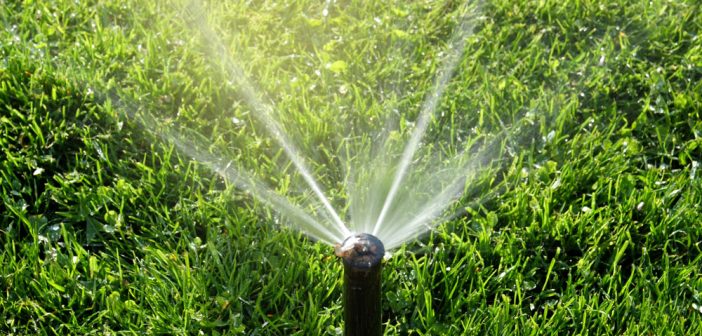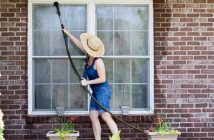Homeowners living in warm, southern climes won’t be winterizing their sprinkler systems. However, if you live in an area with a colder winter then you should winterize your sprinkler system to prevent freezing of the pipes and the damages it could possibly cause. While preparing sprinkler systems for winter weather will cost a few bucks, repairing the damages caused by not doing do will cost even more. What does this winterizing entail?
Necessary Equipment
Homeowners who aren’t familiar with their sprinkler system’s specific parts might want to hire a professional in order to avoid breaking something that they’ll later have to repair. A professional will know the right amount of pressure needed to blow water out of the system and not damage the components. It won’t cost much more than doing it yourself.
However, for homeowners wishing to complete the job themselves, winterizing the system requires a few pieces of equipment:
• A ten cubic foot per minute air compressor
• Hose adapter to join the compressor hose to the blow out port
• Goggles for eye protection
• A means of communicating (such as walkie-talkies or cell phones) with a helper who can see when all the water is blown out of the system if you can’t see it from the blow out port
Sloping Sprinklers
Homeowners with a sprinkler system installed in slightly sloping terrain won’t need an air compressor to blow out the water. All you have to do is turn off the main water supply. Open the drain valves at each end of the system’s zone. When the water drains out, put the caps back on the system. Open the stop and waste valves. Open the backflow valve to drain any water still in the system.
Draining Automatic Sprinkler Systems
High-end sprinkler systems come with automatic pumps for draining. Read the owners manual carefully and follow its instructions. Draining an automatic system can be handled at the control panel.
Manual Draining
Systems with manual valves on the ends and lower locations on the piping require a couple of steps. Shut off the main water supply and open the drain valves.
When no water remains, open the drain valve or cap on the stop and waste valve. This will drain the water left between the main valve and the backflow. Open the caps on the backflow. If check valves are built into the sprinklers, pull the pipes up to drain the water.
Check that there’s no more water in the backflow, pipes, and sprinklers. Cap all the drain valves. Now the system is ready to have any remaining water blown out.
Blowout Process
Shut both backflow valves. Remove the blowout port plug and connect the hose adapter. Hook up the air hose and join the other end to the air compressor.
Now set the compressor at the proper air pressure. Homeowners with black polyethylene pipe should set their air pressure at 50 per square inch or psi. Those with PVC pipe should set their air pressure at 80 psi. Homeowners using more pressure than this could crack the pipes.
Move to the zone furthest from the control panel and open the drain valve on the end. Open it on the control panel and wear your goggles in case one of the sprinkler heads shoots up. Your helper should wear theirs as well.
Open the valve on the compressor slowly so it begins to blow into the system. Water should emerge from the drain valve in the zone as well as the sprinkler heads. Shut off the compressor valve when you see no more water. The sprinkler head gears could be damaged if you don’t. Replace the cap on the drain valve and move to the next closest zone.
When all zones are drained, open the backflow valves and the stop and waste valve so what water is left between the main water valve and the backflow drains. Now it’s time to winterize the sprinkler system.
Winterize
At the main water valve, there is a small amount of water in the pipe that’s exposed to the elements. Wrap this pipe in insulating foam. Wrap that in plastic secured with zip ties. Now the pipe won’t freeze.
Homeowners with a removable pump should disconnect it and store it indoors. The pump could be under cover underground. If the pump is located near the main valve, then wrap it in foam and plastic for the winter.
Now all that’s left is to shut off the control panel. The power source can be disconnected. If it has a winter mode, then turn the setting to winter. Your users manual can explain how and what to do if you’re uncertain.
The Don’ts
Some homeowners not in the know might cut corners by using inappropriate equipment for the blow out to save time and money. For instance, air tanks filled with compressed air or gas is a big no-no. Blowing out the system with large puffs of air won’t move much water.
Leaf blowers have been known to be tried as well as electric pumps of various types. Stick with the normal air compressor rented from your local hardware store, and you should be good to go.









